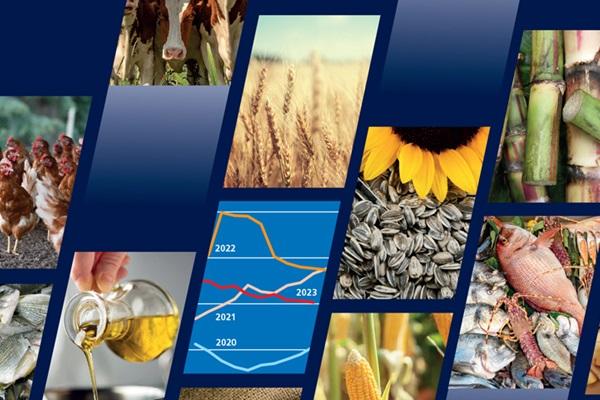Global food commodity prices fell in January, led by sharp declines in sugar and vegetable oils, the Food and
Agriculture Organization (FAO) said.
The FAO Food Price Index, which tracks monthly changes in a basket of internationally traded food commodities,
averaged 124.9 points in January against 127.0 in December. Despite the monthly decline, the index remained 6.2
per cent higher than a year. The drop was largely attributed to improved global supply prospects, thanks in part to
favourable weather in Brazil and India resuming sugar exports.
Vegetable oil prices declined 5.6 per cent last month, as global palm and rapeseed oil prices dropped while soy and
sunflower oil quotations remained stable. Despite the January fall, the index was still up 24.9 per cent on the year.
Meat prices also fell, shedding 1.7 per cent in January. By contrast, cereal prices saw a slight uptick, climbing 0.3
per cent from December, but remained 6.9 per cent lower than in January 2024. While wheat export prices fell
slightly, maize prices increased due to revised lower production and stock forecasts in the United States. Rice prices
dropped 4.7 per cent, reflecting ample export supplies. Dairy prices rose 2.4 per cent month-on-month and 20.4 per
cent year-on-year, led by a monthly surge in cheese quotations, which outweighed declines in butter and milk
powder prices. In a separate report, the FAO trimmed its forecast for global cereal production in 2024 to 2.840
billion against a previously given 2.841 billion. The revision was due primarily to the cut in estimates for US maize
production. The winter wheat planting season in the northern hemisphere concluded in January, with increased
sowings in France, Germany and the United Kingdom, while Russia saw a decline due to weather conditions, FAO
said. Maize harvests in the southern hemisphere will begin in the second quarter, with improved yields expected in
Argentina and Brazil. High maize prices have driven increased plantings in South Africa. FAO raised its forecast for
world cereal utilisation in 2024/25 by 0.9 per cent to 2.869 billion tonnes, while global cereal stocks were expected
to decline 2.2 per cent by the close of seasons in 2025, hit by the contraction in US maize stocks. International trade
in cereals in 2024/25 is forecast to contract by 5.6 per cent compared to the previous year to 483.5 million tonnes,
largely due to lower demand from China for barley, maize and wheat.
- info@foodprocessingbazaar.com
- +91-9867601701
Menu












